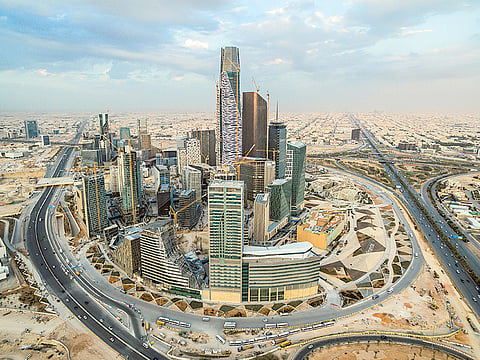How Saudi Arabia can reduce fiscal deficits and manage growth momentum
Spending cuts should not impact near term economic growth prospects

Also In This Package
Dubai: Saudi Arabia’s recent announcement of a narrowing of the budget deficit to $2 billion in the first quarter of this year from $29 billion in the fourth quarter and $9 billion in the first quarter of 2020 points to significant improvement in its public finances, according to rating agency Moody’s.
“Although this improvement was largely driven by higher oil prices and a large seasonal drop in spending, the budget performance figures also reveal a structural improvement evident in the decline in the non-oil fiscal deficit to the lowest level in more than six years,” said Alexander Perjessy, VP-Senior Analyst at Moody’s.
The improvement in public finances is attributed to the tripling of the value added tax (VAT) rate to 15 per cent last July and a nearly 50 per cent cut in capital expenditure so far this year, in line with the approved 2021 budget.
“The structural improvement reduces the fiscal exposure to fluctuations in global oil demand and prices. If sustained, it will also help reverse part of the fiscal deterioration that took place last year as a result of the coronavirus shock and arrest a further significant deterioration in the government's balance sheet,” said Perjessy.
The rating agency said if the oil prices average around $60/barrel this year and the government maintains spending in line with the approved budget targets, the full-year fiscal deficit would narrow below 5 per cent of GDP in 2021 from 11.2 per cent of GDP in 2020. This, along with higher nominal GDP, would be sufficient to help reverse some of last year’s 10 percentage-point increase in the government’s debt-to-GDP ratio.
Sensitive to oil price
Saudi Arabia's public finances remain highly sensitive to fluctuations in the oil price as oil revenues continue to account for more than a half of total revenues, although this is down from an average of more than 70 per cent in 2014-18.
The rating agency said a seasonal drop in spending, which tends to be the highest in the last quarter of the year and the lowest in the first quarter of the year, also drove the fiscal improvement in the first quarter. Both of these factors have reduced the quarterly fiscal deficit to one of the lowest on record in the past six years, bested only by a $7 billion surplus in the first quarter of 2019.
Impact of spending cuts
Moody’s said the Kingdom’s recent fiscal reforms such as the tripling of VAT to 15 per cent in July last year significant spending cuts has reduced the vulnerability of public finances to oil price declines. However, the rating agency also notes that a large budgeted cut in government capital spending (equivalent to nearly 2 per cent of GDP) will weigh on Saudi Arabia's economic recovery during 2021.
A part of the budget spending cuts is expected to be offset by investment spending on domestic projects by the Public Investment Fund (PIF), Saudi sovereign wealth fund.
Last week, the International Monetary Fund (IMF) said in its concluding statement of its 2021 Article IV consultation that quick COVID response has put Saudi economy on recovery path and reforms under Vision 2030 playing a key role in helping the economy navigate the pandemic.
Sign up for the Daily Briefing
Get the latest news and updates straight to your inbox








_US_GOVERNMENT_SHUTDOWN_resources1_16a08546ce2_large.jpg?w=320&auto=format%2Ccompress&fit=max)
